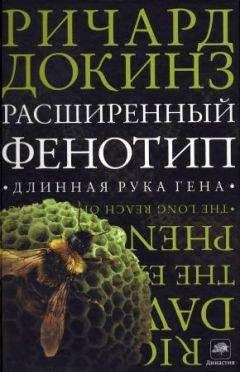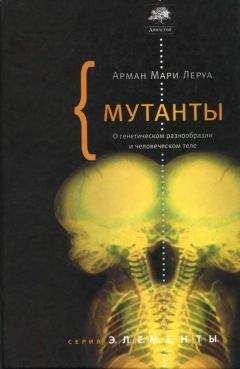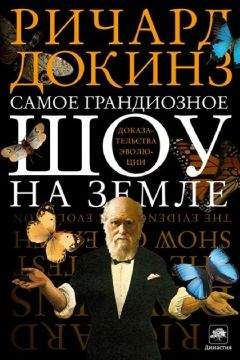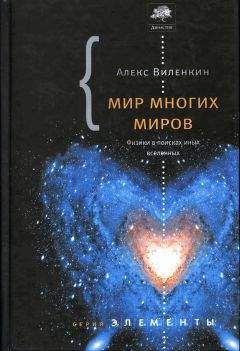Ознакомительная версия.
Wickler, W. (1976). Evolution-oriented ethology, kin selection, and altruistic parasites, Zeitschrift fur Tierpsychologie 42, 206–214.
Wickler, W. (1977). Sex-linked altruism, Zeitschrift fur Tierpsychologie 43, 106–107.
Williams, G. C. (1957). Pleiotropy, natural selection, and the evolution of senescence. Evolution 11, 398–411.
Williams, G. C. (1966). Adaptation and Natural Selection. Princeton, N.J.: Princeton University Press.
Williams, G. C. (1975). Sex and Evolution. Princeton, N.J.: Princeton University Press.
Williams, G. C. (1979). The question of adaptive sex ratio in outcrossed vertebrates. Proceedings of the Royal Society of London, В 205, 567–580.
Williams, G. C. (1980). Kin selection and the paradox of sexuality. In Sociohiology: Beyond Nature/Nurture? (eds G. W. Barlow & J. Silverberg), pp. 371–384. Boulder: Westview Press.
Wilson, D. S. (1980). The Natural Selection of Populations and Communities. Menlo Park: Benjamin/Cummings.
Wilson, E. O. (1971). The Insect Societies. Cambridge, Mass.: Harvard University Press.
Wilson, E. O. (1975). Sociohiology: the New Synthesis. Cambridge, Mass.: Harvard University Press.
Wilson, E. O. (1978). On Human Nature. Cambridge, Mass.: Harvard University Press.
WiNOGRAD, T. (1972). Understanding Natural Language. Edinburgh: Edinburgh University Press.
Witt, P. N., Reed, C. F. & Peakall, D. B. (1968). A Spider's Web. New York: Springer Verlag.
Wolpert, L. (1970). Positional information and pattern formation, in Towards a Theoretical Biology, 3: Drafts (ed. C. H. Waddington), pp. 198–230. Edinburgh: Edinburgh University Press.
Wright, S. (1932). The roles of mutation, inbreeding, crossbreeding and selection in evolution. Proceedings of the 6th International Congress of Genetics 1, 356–368.
Wright, S. (1951). Fisher and Ford on the Sewall Wright effect. American Science Monthly 39, 452–458.
Wright, S. (1980). Genie and organismic selection. Evolution 34, 825–843. Wu, H. M. H., Holmes, W. G., Medina, S. R. & Sackett, G. P. (1980). Kin preference in infant Macaca nemestnna. Nature 285, 225–227. Wynne-Edwards, V. C. (1962). Animal Dispersion in Relation to Social Behaviour. Edinburgh: Oliver & Boyd.
Young, J. Z. (1957). The Life of Mammals. Oxford: Oxford University Press. Young, R. M. (1971). Darwin’s metaphor: does nature select? The Monist 55, 442-503
Z AH AVI, A. (1979). Parasitism and nest predation in parasitic cuckoos. American Naturalist 113,157–159.
Список рекомендуемой литературы
Allaby, М. (1982). Animal Artisans. London: Weidenfeld & Nicolson.
Barkow, J. H., Cosmldes, L. & Tooby, J. (1992). The Adapted Mind. New York: Oxford University Press.
Basalla, G. (1988). The Evolution of Technology. Cambridge: Cambridge University Press.
Blackmore, S. (1999). The Meme Machine. Oxford: Oxford University Press. Bonner, J. T. (1988). The Evolution of Complexity. Princeton: N.J.: Princeton University Press.
Brandon, R. N. (1990). Adaptation and Environment. Princeton, N.J.: Princeton University Press.
Brandon, R. N. & Burian, R. M. (1984). Genes, Organisms, Populations: Controversies over the Units of Selection. Cambridge, Mass.: MIT Press.
Buss, L. W. (1987). The Evolution of Individuality. Princeton, N J.: Princeton University Press.
Clayton, D. & Harvey, P. (1993). Hanging nests on a phylogenetic tree. Current Biology 3, 882–883.
Cronin, H. (1991). The Ant and the Peacock. Cambridge: Cambridge University Press.
Cziko, G. (1995). Without Miracles. Cambridge, Mass.: MIT Press.
Davies, N. B. (1992). Dunnock Behaviour and Social Evolution. Oxford: Oxford University Press.
Davis, B. D. (1986). Storm over Biology. Buffalo: Prometheus Books. Dawkins, R. (1982). Universal Darwinism. In Evolution from Molecules to Mm (ed. D. S. Bendall), pp. 403–425. Cambridge: Cambridge University Press. Dawkins, R. (1985). Review of Mot in our Genes (S. Rose, L. J. Kamin & R. C. Lewontin). New Scientist 105,59–60.
Dawkins, R. (1987). Universal parasitism and the extended phenotype. In Evolution and Coadaptation in Biotic Communities (EDS S. Kawano, J. H. Connell & T. Hidaka), pp. 183–197. Tokyo: University of Tokyo Press.
Dawkins, R. (1989a). The evolution of evolvability. In Artificial Life (ed. C. Langton). Santa Fe, N.M.: Addison Wesley.
Dawkins, R. (1989). The Selfish Gene, 2nd edn. Oxford: Oxford University Press. Dawkins, R. (1990). Parasites, desiderata lists, and the paradox of the organism. In The Evolutionary Biology of Parasitism (eds A. E. Keymer & A. F. Read). Cambridge: Cambridge University Press.
Dawkins, R. (1991). Darwin triumphant: Darwinism as a universal truth. In Man and Beast Revisited (eds M. H. Robinson & L. Tiger), pp. 23–39. Washington: Smithsonian Institution.
Dawkins, R. (1996). Climbing Mount Improbable. New York: Norton. Dawkins, R. (1998). Unweaving the Rainbow. London: Penguin.
Dennett, D. (1995). Darwin's Dangerous Idea. New York: Simon & Schuster. Depew, D. J. & Weber, В. H. (1996). Darwinism Evolving. Cambridge, Mass.: MIT Press. de Winter, W. (1997). The beanbag genetics controversy: towards a synthesis of opposing views of natural selection. Biology and Philosophy 12, 149–184. Durham, W. H. (1991). Coevolution: Genes, Culture and Human Diversity. Stanford, Calif.: Stanford University Press.
Eldredge, N. (1995). Reinventing Darwin: The Great Debate at the High Table, of Evolutionary Theory. New York: John Wiley.
Endler, J. A. (1986). Natural Selection in the Wild. Princeton, N.J.: Princeton University Press.
Ewald, P. (1993). Evolution of Infectious Diseases. Oxford: Oxford University Press.
Fletcher, D. J. C. & Michener, C. D. (1987). Kin Recognition in Humans. New York: Wiley.
Fox Keller, E. and Lloyd, E. A. (1992). Keywords in Evolutionary Biology. Cambridge, Mass.: Harvard University Press.
Futuyma, D. J. (1998). Evolutionary Biology, 3rd edn. Sunderland, Mass.: Sinauer.
Goodwin, B. and Dawkins, R. (1995). What is an organism? A discussion. Perspectives in Ethology 2, 47–60.
Gould, S. J. & Eldredge, N. (1993). Punctuated equilibrium comes of age. Nature 366, 222–227.
Grafen, A. (1984). Natural selection, kin selection and group selection. In Behavioural Ecology: An Evolutionary Approach (eds J. R. Krebs & N. B. Davies). Oxford: Blackwell Scientific Publications.
Grafen, A. (1985). A geometric view of relatedness. Oxford Surveys in Evolutionary Biology 2, 28–89.
Grafen, A. (1990a). Biological signals as handicaps. Journal of Theoretical Biology 144, 517–546.
Grafen, A. (1990b). Do animals really recognize kin? Animal Behaviour 39, 42–54.
Grafen, A. (1991). Modelling in behavioural ecology. In Behavioural Ecology: An Evolutionary Approach (eds J. R. Krebs & N. B. Davies). Oxford: Blackwell Scientific Publications.
Guilford, T. & Dawkins, M. S. (1991). Receiver psychology and the evolution of animal signals. Animal Behaviour 42,1-14.
Haig, D. (1993). Genetic conflicts in human pregnancy. Quarterly Review of Biology 68, 495–532.
Hamilton, W. D. (1996). Marrow Roads of Gene Land: The Collected Papers of W. D. Hamilton, I: Evolution of Social Behaviour. Oxford: W H. Freeman/Spektrum.
Hansell, M. H. (198 4). Animal Architecture and Building Behaviour. London: Longman.
Harvey, P. H. & Pagel, M. D. (1991). The Comparative Method in Evolutionary Biology. Oxford: Oxford University Press.
Hecht, M. K. & Hoffman, A. (1986). Why not neo-Darwinism? A critique of paleobiological challenges. In Oxford Surveys in Evolutionary Biology 3, 1-47. Oxford: Oxford University Press.
Hepper, P. G. (1986). Kin recognition: functions and mechanisms. A review. Biological Reviews 61, 63–93.
Hoffman, A. (1989). Arguments on Evolution. New York: Oxford University Press.
Holldobler, B. & Wilson, E. O. (1990). The Ants. Berlin: Springer-Verlag.
Hull, D. L. (1988a). Interactors versus vehicles. In The Role of Behaviour in Evolution (ed. H. C. Plotkin), pp. 19–50. Cambridge, Mass.: MIT Press.
Hull, D. L. (1988A). Science as a Process. Chicago: University of Chicago Press.
Keymer, A. & Read, A. (1989). Behavioural ecology: the impact of parasitism. In Parasitism: Coexistence or Conflict? (eds C. A. Toft & A. Aeschlimann). Oxford: Oxford University Press.
Kimura, M. (1983). The Neutral Theory of Molecular Evolution. Cambridge: Cambridge University Press.
Kitcher, P. (1985). Vaulting Ambition. Cambridge, Mass.: MIT Press.
Koch, W. A. (1986). Genes vs. memes. Hagen: Druck Thiebes.
Krebs, J. R. & Dawkins, R. (1984). Animal signals: mind-reading and manipulation. In Behavioural Ecology: An Evolutionary Approach (eds J. R. Krebs & N. B. Davies). Oxford: Blackwell Scientific Publications.
Lloyd, E. A. (1988). The Structure and Confirmation of Evolutionary Theory. New York: Greenwood Press.
Maynard Smith, J. (1982). Evolution and the Theory of Games. Cambridge: Cambridge University Press.
Maynard Smith, J. (1986a). The Problems of Biology. Oxford: Oxford University Press.
Maynard Smith, J. (1986b). Structuralism versus selection — is Darwinism enough? In Science and Beyond (eds S. Rose & L. Appignanesi) . Oxford: Basil Blackwell.
Maynard Smith, J. (1988). Did Darwin Get it Right? London: Penguin. Maynard Smith, J., Burian, R., Kauffman, S., Alberch, P., Campbell, J., Goodwin, B., Lande, R., Raup, D. & Wolpert, L. (1985). Developmental constraints and evolution. Quarterly Review of Biology 60, 265–287.
Maynard Smith, J. & Szathmary, E. (1995). The Major Transitions in Evolution. Oxford: W H. Freeman/Spectrum.
Mayr, E. (1983). How to carry out the adaptationist program. American Naturalist 121, 324–334.
Minchella, D. J. (1985). Host life-history variation in response to parasitism. Parasitology 90, 205–216.
Nesse, R. & Williams, G. C. (1995)- Evolution and Healing: The New Science of Darwinian Medicine. London: Weidenfeld & Nicolson.
Nunney, L. (1985). Group selection, altruism, and structured-deme models. American Naturalist 126, 212–229. {2.89}
Otte, D. & Endler, J. A. (eds) (1989). Speciation and its Consequences. Sunderland, Mass.: Sinauer.
Oyama, S. (1985). The Ontogeny of Information. Cambridge: Cambridge University Press.
Parker, G. A. & Maynard Smith, J. (1990). Optimality theory in evolutionary biology. Nature 348, 27–33.
Ознакомительная версия.





